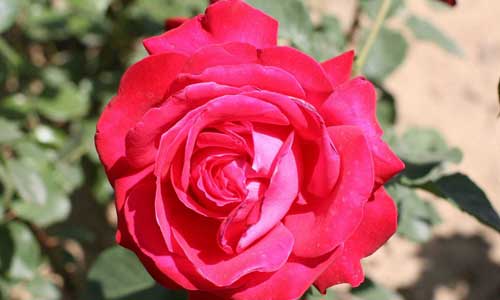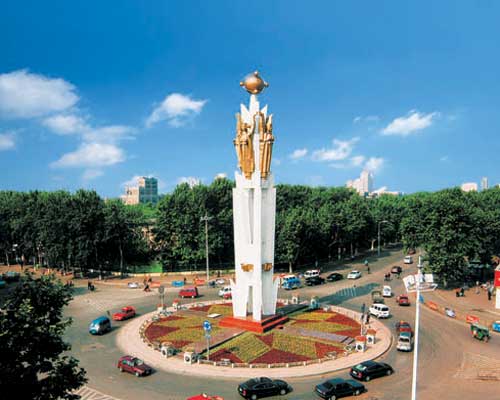|
City flower

The city flower of Pingdingshan is the Chinese rose. Its scientific name is chinensis. Chinese roses, of the rosaceae family were originally raised in Jiangsu, Zhejiang, Shandong and Hebei provinces. They are now planted across the country.
Chinese roses are highly adaptable to the environment. They love warm and cool climates, as long as there is sufficient sunshine. They are drought-resistant and cold-resistant. Highly-prized Chinese roses have been planted for more than 1,000 years. Over the past 200 years, they have been developed into 20,000 varieties. They include mini-roses, 10-sister roses, ramanas roses, super-huge roses, single-flower huge roses and vine-based roses. Tradition says the roots, leaves and flowers of Chinese roses can be applied as treatments to invigorate the circulation of blood, relieve internal heat or fever and to reduce swelling.
Chinese roses are evergreen shrubs or semi-evergreen shrubs with hook-like pickles. They have three to five feather-like leaflets. The flowers, in single lobes, looking pink or nearly white, often crowd together. Chinese roses are widely applied in flower beds and flower borders. Vine-based Chinese roses are used for flower
City sculpture (city mark) – “Entrepreneurship”

The city sculpture “Entrepreneurship” was designed in October 1984 and completed in October 1990. It was placed at the crossing of Jianshe Road and Xinhua Road in downtown Pingdingshan in an area 1,027 square meters in size. The sculpture is 33 meters high, with a granite base.
All the affiliated molds are bronze artwork. The lower part of the sculpture depicts lightning rising to the sky. Above the lightning are four inlaid bronze eagles. During the Shang Dynasty (c.16th century-11th century BC), Pingdingshan was the home of the Ying tribe. In early Western Zhou dynasty (c.11th century-771 BC) years, it became a home of a member of the Zhou imperial clan and was known as Kingdom Ying.
In Chinese, Ying is a homophone of eagle. Therefore, eagles are used to depict the ancient history and culture of a place. The four portraits in the middle, two men and two women, represent coal workers, textile workers, steel workers and scientific workers to represent the industries and people of Pingdingshan. The upper part of the sculpture is a great ball-shaped object, surrounded by four small balls symbolizing planets circling around the sun. The sculpture was created by Wang Ximin, a famed Chinese sculpture artist format China’s Central Academy of Fine Arts.
|